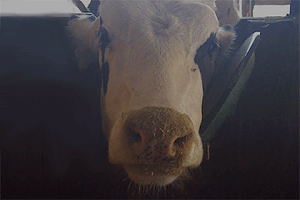By Jill Anderson
Background
Carinata seed is being developed as a new feedstock for biofuel production. After extraction of the oil, the meal is of interest to be used as a livestock feed. This meal is a good source of rumen degradable protein, which has a total digestibility comparable to that of soybean and linseed meals (Lawrence and Anderson, 2015a). Carinata meal, however, has high concentrations of glucosinolates [approx. 16 mg/g of DM (Dry Matter)] which limits its use as a feedstuff because of possible reduction in palatability resulting from the bitter taste caused by glucosinolate degradation. Glucosinolates can also cause health problems related to the thyroid gland function and consequently cause growth issues. Although, ruminants are more tolerant to glucosinolates than non-ruminants; it is not recommended to feed meals containing glucosinolates in excess of 10% inclusion in the diet, which is currently the federal regulation according to the Food and Drug Administration (FDA).

Experiment
The SDSU Dairy and Food Science Department recently tested the effects of feeding carinata meal on growth performance of dairy heifers. Twenty-four Holstein heifers [6.6 ± 0.7 mo. of age and 481 ± 59 lbs of BW (Body Weight)] were used in a 16-week feeding study with two treatment diets. Treatments were 1) cold-pressed carinata meal (CRM, 22% Fat), and 2) distillers dried grains with solubles (DDGS, 9.3 % Fat) both at 10 % of the diet on a dry matter basis. The DDGS was chosen as comparison since it has been shown it can replace corn and soybean meal in dairy heifer diets. The fat content of DDGS also allows for a closer total fat content between diets when compared to other common protein sources. The remainder of the diets were comprised of similar amounts of hay, ground corn, soybean meal and mineral mix to meet nutrient requirements and allow for similar intakes of protein and energy between treatments (Table 1). Heifers were individually fed and the amount of ration on a DM basis was limit-fed at 2.65% of their body weight (BW). Heifers had access to water at all times. To evaluate growth performance throughout the study every two weeks heifers were weighed, measured for skeletal frame size, and body condition scored (1= emaciated, 5= obese).
Table 1. Experimental diets containing carinata meal (CRM) or distillers dried grains with solubles (DDGS).